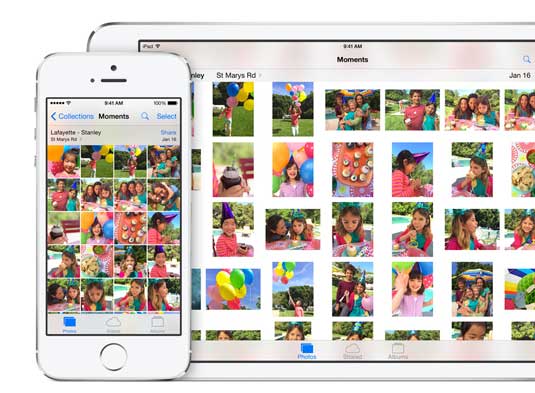10 reasons iOS 8 is 'biggest change since the App Store'

Last night Apple launched its iOS 8 operating system at its Worldwide Developers Conference (WWDC). And for anyone designing apps for iPhone and iPad, it's a very big deal indeed.
While there are a number of consumer-facing improvements (which you can read about here), in the main, the launch is directed at keeping app developers happy and helping them to create better apps to fight off Android. So much so that CEO Tim Cook called the new iOS SDK - which includes more than 4,000 new developer APIs and changes - “the biggest release since the launch of the App Store".
iOS 8 will launch to the public in the autumn for the iPhone 4s, iPhone 5, iPhone 5c, iPhone 5s, iPod touch 5th generation, iPad 2, iPad with Retina display, iPad Air and iPad mini, but anyone with a developer account can access beta 1 right now here. Meanwhile here are the main features of the new release that you need to know about...
01. A new programming language

As part of the iOS 8 launch, Apple has released a new programming language called Swift which it says will help developers "write safer and more reliable code by eliminating entire categories of common programming errors".
Although Swift seems designed to eventually replace Objective C, it uses the same LLVM compiler and runtime so the two languages can coexist within the same application. A beta version of Swift is available immediately for iOS and OS X Developer Program members at developer.apple.com.
02. Direct access to hardware
iOS 8 also introduces Metal, a new graphics technology that provides direct access to the graphics hardware on Apple's A7 processors. This will be of particular interest to anyone working in iOS game development, potentially offering a tenfold boost in draw call speed compared to iOS 7.
Apple claims this will enable "leading game providers for the first time to bring console-class 3D games to mobile devices".
Daily design news, reviews, how-tos and more, as picked by the editors.
03. A new cloud service

CloudKit is a simple back-end cloud service for developers that includes up to a petabyte of free storage and transfer. Essentially, Apple is offering to take responsibility for the server-side, leaving developers to concentrate on the client-side, rather than worrying about managing servers.
Similar to Facebook's Parse, this should be a huge boost for anyone developing cloud apps for iOS, although Apple hasn't yet announced the pricing plan for those who exceed storage limits.
04. New beta testing tools
Beta testing your apps will become dramatically easier with iOS 8. That's because Apple has integrated its recent acquisition, the popular TestFlight, into its main testing tools, allowing for seamless, free beta testing of applications. Developers will be able to offer up to 1,000 users beta versions of their apps.
05. A new gaming framework

The new iOS release includes SceneKit, an extension of the SpriteKit developer framework introduced for casual game developers last year. SceneKit offers the same automated physics but for 3D environments. It comes with its own physics engine, particle system, and supports scripted actions. Meanwhile, major enhancements to SpriteKit include field forces, per-pixel physics and inverse kinematics.
06. Customisation possibilities
With iOS 8, app developers have new opportunities to customise the user experience via extensions, with new sharing options, custom photo filters, custom actions and document APIs on offer. Third-party apps can also add widgets into the 'Today' view of Notification Center. At the launch, Apple showed the example of eBay users being able to add a new widget for viewing bids.
07. Data sharing between apps

Traditionally iOS applications haven't really been able to talk to each other, but that's all dramatically changed with iOS 8. Now, as long as the user consents, third-party apps will be able to share data with one another via new Extensibility tools.
This is directly relevant to two of the headline apps announced for iOS 8. Firstly, Health draws in health and fitness data gathered from other apps, such as Nike, via the HealthKit API. For example, your blood pressure app could share its data with a physician app, such as the Mayo Clinic app, so your doctor can provide high-quality guidance and care.
Similarly, HomeKit is a new framework for building smart home devices and connecting them to iOS, including Siri. For example, you tell Siri you are going to bed and it could dim the lights, lock your doors, close the garage door and set the thermostat.
08. Access to Touch ID
The Touch ID fingerprint recognition introduced in the Apple 5s has now been opened up to developers via the Touch ID API beta. Enabling you to securely authenticate users within apps, protect logins and user data, and unlock keychain items, this will be of particular interest for anyone wanting to add a layer of security to their app - the finance app Mint was shown as an example.
09. PhotoKit

Developers of photography applications can now tap into the power of the same framework as the built-in Photos app, which means faster performance, nondestructive edits and the ability to both read and write to the Photos library.
10. New camera APIs
Apple also announced new camera APIs for iOS 8. These promise developers of apps that access the device's camera fine grain control over focus, white balance and exposure.
What do you think of the new features in iOS 8? Do they go far enough? Let us know in the comments below!

Tom May is an award-winning journalist specialising in art, design, photography and technology. His latest book, The 50 Greatest Designers (Arcturus Publishing), was published this June. He's also author of Great TED Talks: Creativity (Pavilion Books). Tom was previously editor of Professional Photography magazine, associate editor at Creative Bloq, and deputy editor at net magazine.
